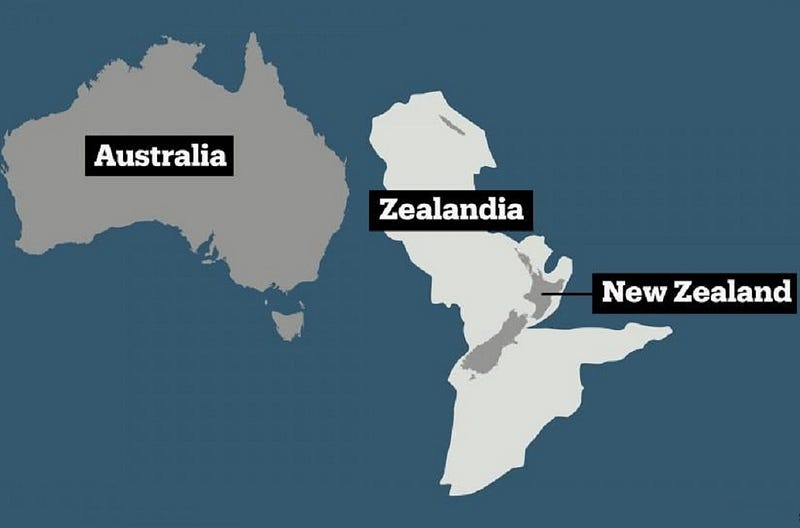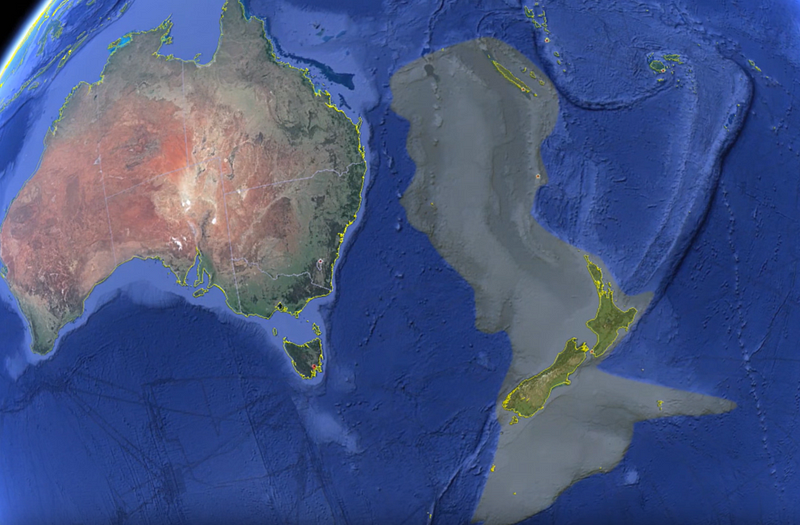Discovering Zealandia: Earth's Hidden Eighth Continent
Written on
Chapter 1: The Enigma of Zealandia
Earth boasts a fascinating geographical puzzle known as Zealandia, an underground continent that sank into the ocean millions of years ago. Much like the mythical Atlantis, Zealandia's existence has sparked debates among geologists for years. With this discovery, we could redefine our world from seven to eight continents. Many experts assert that Zealandia meets all the criteria necessary to be classified as a drowned continent.
Traditionally, Australia and New Zealand have been viewed as parts of the same landmass. However, research indicates that New Zealand is actually situated on a distinct continental crust separate from Australia. Zealandia, which lies predominantly submerged, encompasses roughly 5 million square kilometers in the southern Pacific Ocean, including not only New Zealand but also numerous islands extending northward to New Caledonia.

Most of this continent is beneath the waves, but it wasn't always so. Approximately 420 million years ago, Zealandia was part of the supercontinent Gondwana, which amalgamated with landmasses like South America, Africa, and Australia—continents that have since drifted apart.

As these continents separated, they retained their general shapes. In contrast, Zealandia began to diverge, causing its crust to stretch and thin, akin to pizza dough being rolled out. As global warming caused sea levels to rise, Zealandia submerged more deeply, with only its highest peaks remaining above water, forming the islands we know today, including New Zealand.

So, what prevents Zealandia from being officially recognized as a continent? To determine this, we must consider the criteria that define a continent:
Section 1.1: Criteria for Continental Classification
- Elevation: Continents must be elevated compared to the surrounding oceanic crust. Despite being largely submerged, Zealandia is still elevated relative to the ocean floor.
- Rock Types: A continent should have a diverse range of rock types, including igneous, sedimentary, and metamorphic rocks. Zealandia possesses this variety.
- Thickness: Continental crust is generally thicker than oceanic crust. Zealandia’s crust is around 30-40 km thick, while oceanic crust averages about 7 km.
- Size: Continents need to be substantial landmasses. Zealandia spans approximately 1.89 million square miles, comparable to the size of greater India.
If it weren't for the vast volumes of water covering Zealandia, the conversation about its status as a continent might have been settled long ago. Imagining Earth without its oceans, as we do with arid planets like Mars, makes Zealandia’s continental status unmistakable.
Should Zealandia receive formal recognition, it would be the smallest among the continents, which include Europe, Asia, Africa, North America, South America, Antarctica, and Australia.
Chapter 2: Exploring Zealandia's Geological Features
The first video, "Zealandia | Earth's Forgotten Eighth Continent," delves into the geological significance and the mysteries surrounding Zealandia.
The second video, "Is Zealandia Earth's 8th Continent?" explores the ongoing debates and scientific discussions regarding Zealandia's status.